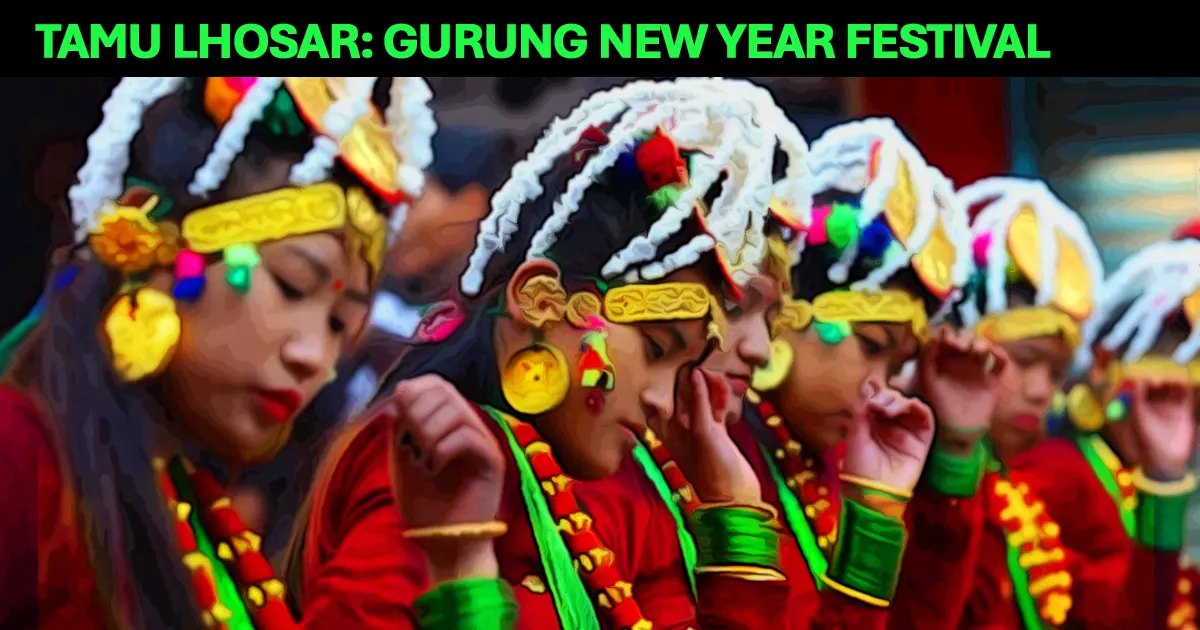PRELIMS BITS

The Gurung community in Nepal celebrates Tamu Lhosar, marking the beginning of their new year. This vibrant festival involves feasting, cultural performances, and the wearing of traditional attire, fostering community unity and cultural identity.
What is Tamu Lhosar?
- Meaning: The word “Tamu” refers to the Gurung community, while Lhosar signifies the “new year” celebration.
- Celebrated on the 15th of the Nepali month Push, which falls in December or January.
- Tamu Lhosar marks the transition from one animal cycle (Lho) to another in the Gurung calendar, which is divided into 12 cycles, each represented by an animal.
- Recent Transition: This year, the Gurungs bid farewell to the Garuda (eagle) cycle and welcomed the Snake cycle.
Gurung Calendar
The Gurung year follows a 12-year animal cycle, including animals such as:
- Garuda (eagle), serpent, horse, sheep, monkey, bird, dog, deer, mouse, cow, tiger, and cat.
Cultural Significance
- The festival symbolizes the end of one year and the hopeful beginning of the next.
- Tamu Lhosar strengthens community bonding and reinforces the cultural heritage of the Gurung people.
Celebration Locations
Tamu Lhosar is celebrated with enthusiasm across several districts in Nepal, especially in:
- Lamjung, Gorkha, Tanahun, Syangja, Manang, Kaski, and Parbat.
- Major events are also held in Kathmandu.
Traditional Attire
- Women: Wear a Makhamali blouse, Ghalek shawl, Patuki belly-binding cloth, and saree.
- Men: Typically wear a Bhoto vest, Bhangra shirt, and Kachhad kilt.
- Tamu Lhosar: The New Year festival for the Gurung community, celebrated with cultural pride.
- Gurung Community: An ethnic group known for their rich heritage, primarily from the hilly regions of Nepal.
- Ghalek: A traditional shawl worn by Gurung women, essential during festivals like Tamu Lhosar.
- Push Month: The 9th month of the Nepali calendar, aligning with the celebration of Tamu Lhosar.




